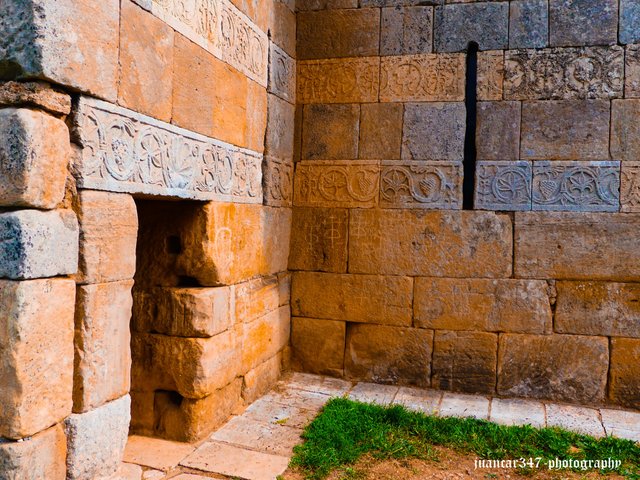[ENG-SPN] A fragment of Visigothic Spain / Un fragmento de la España visigoda

We could argue that time, that Borgesian entelequia on which we pour out an infinite hunger for destruction and oblivion, has always been, at least as far as these remains in particular are concerned, much more charitable than the Cainite hand of some men, who, seeing in them a simple pile of old stones, condemned, simply and plainly, the permissive function of communal quarry, contributing, even in a subjective way, but effectively, deep down, to what began in the seventh century by the Muslim armies, which, under the command of the commanders, Tarik and Muza, invaded the Iberian Peninsula, crossing the Pillars of Hercules with their ships: the end of the empire and the way of life of the Visigoths.

The once powerful monastery of Santa María, located, to make matters worse, in the heart of a legendary land, that of Lara, which witnessed the birth, rebellion and imparting justice to the first counts and judges of Castile, is nothing but, today, an unrecognizable fragment of that glorious lost world, whose remains, languid and suffering from that melancholic mood that characterizes Verlaine's verses, see time go by, mortally wounded and It could be said that they have been definitely forgotten, if it were not for the pious marks, generally in the shape of a monxoi cross -the one that is represented elevated on a mound, in reference, not only to the Calvary of Christ, but also to Jerusalem, to the Holy City- that pilgrims leave throughout time, as a sign of consideration and passage, in their unequivocal transcendental adventure.

Podríamos alegar que el tiempo, esa entelequia borgiana sobre la que volcamos un hambre infinito por la destrucción y el olvido, ha sido siempre, al menos en cuanto a estos restos en particular se refiere, mucho más caritativo que la mano cainita de unos hombres, que, viendo en ellas un simple montón de piedras viejas, condenó, simple y llanamente, a la permisiva función de cantera comunal, contribuyendo, siquiera sea de una manera subjetiva, pero efectiva, en el fondo, a aquello comenzado en el siglo VII por los ejércitos musulmanes, que, al mando de los comandantes, Tarik y Muza, invadieron la Península Ibérica, atravesando con sus navíos las Columnas de Hércules: el fin del imperio y el modo de vida de los visigodos.

El otrora poderoso monasterio de Santa María, situado, para más congoja, en el corazón de una tierra legendaria, la de Lara, que vio nacer, rebelarse e impartir justicia a los primeros condes y jueces de Castilla, no es, sino, hoy en día, un irreconocible fragmento de aquel glorioso mundo perdido, cuyos restos, lánguidos y adolecidos de esa melancólica tesitura que caracteriza los versos de Verlaine, ven el tiempo pasar, mortalmente heridos y podría decirse que definitivamente olvidados, si no fuera por las piadosas marcas, generalmente con forma de cruz monxoi -la que se representa elevada sobre un montículo, en referencia, no sólo al Calvario de Cristo, sino también, a Jerusalén, a la Ciudad Santa- que los peregrinos van dejando a lo largo de los tiempos, como muestra de consideración y paso, en su inequívoca aventura trascendental.

NOTICE: Both the text and the photographs that accompany it are my exclusive intellectual property and, therefore, are subject to my Copyright.
AVISO: Tanto el texto, como las fotografías que lo acompañan, son de mi exclusiva propiedad intelectual y por lo tanto, están sujetos a mis Derechos de Autor.
